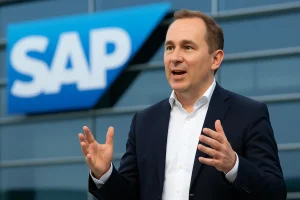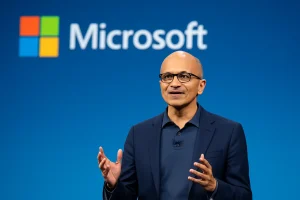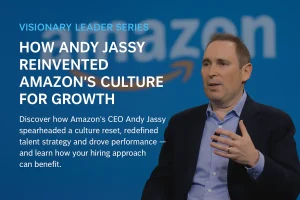“The strategic success of any executive transition fundamentally depends on how effectively leaders navigate their first 3 months, establishing credibility and influence while simultaneously assessing organizational dynamics and positioning themselves to want to make a good impression that resonates throughout the enterprise.”
The contemporary executive’s transition into a new job represents far more than traditional onboarding procedures; it constitutes a strategic imperative that determines long-term organizational impact and leadership effectiveness. As C-level professionals increasingly find themselves navigating complex market environments and stakeholder expectations, the ability to execute a sophisticated first 90 days strategy becomes paramount to establishing sustainable competitive advantage and organizational transformation.
The first 3 months of executive tenure serve as a critical assessment period where leadership capabilities, strategic vision, and cultural alignment converge to shape organizational perceptions and future opportunities. During this pivotal timeframe, successful executives must demonstrate their capacity to understand complex organizational dynamics while simultaneously positioning themselves as catalysts for strategic growth and operational excellence.
The strategic framework for executive transition extends beyond conventional approaches to encompass sophisticated stakeholder analysis, organizational assessment, and value creation methodologies that distinguish exceptional leaders from their peers. Understanding how to leverage your initial months on the job requires a comprehensive approach that balances immediate credibility-building with long-term strategic positioning.
Strategic Pre-Transition Preparation and Day 1 Excellence
The sophisticated executive recognizes that strategic preparation begins well before the official start date, encompassing comprehensive organizational intelligence gathering and stakeholder mapping that enables immediate value creation. Your ability to prepare for your first engagement with the new organization determines the trajectory of your entire tenure and establishes the foundation for transformational leadership impact.
Effective preparation for a new position requires executives to conduct thorough due diligence that extends far beyond traditional research methodologies to include competitive analysis, industry trend assessment, and organizational culture evaluation. This strategic intelligence enables leaders to hit the ground running with sophisticated understanding of market dynamics and internal challenges that may not be immediately apparent through conventional channels.
The strategic importance of day 1 cannot be overstated, as this initial interaction establishes critical first impressions and sets expectations for your leadership style and operational approach. Your ability to demonstrate executive presence while simultaneously showing respect for existing organizational structures creates the optimal foundation for building trust and credibility among key stakeholders throughout the enterprise.
Contemporary executives must approach their initial engagement with a sophisticated understanding of organizational politics and power structures, recognizing that effective leadership requires both formal authority and informal influence to drive meaningful change. The strategic executive utilizes their first interactions to begin building the coalition of support necessary for long-term success while carefully assessing the organizational landscape for opportunities and challenges.
Executive Intelligence and Stakeholder Analysis
Your day plan for the initial weeks should incorporate comprehensive stakeholder mapping that identifies not only formal reporting relationships but also informal influencers who shape organizational culture and decision-making processes. This strategic approach enables you to understand the complex web of relationships that determine organizational effectiveness and provides insights into potential allies and obstacles.
The new employee at the executive level must recognize that traditional orientation processes may be insufficient for their strategic needs, requiring proactive intelligence gathering and relationship building that extends throughout the first few months of tenure. Your ability to quickly identify and engage with critical stakeholders determines your effectiveness in driving organizational change and achieving strategic objectives.
Building Strategic Relationships and Organizational Intelligence
The executive’s approach to relationship building transcends traditional networking to encompass strategic alliance formation that supports long-term organizational objectives and personal career advancement. Your ability to build relationships with both internal stakeholders and external partners determines your capacity to drive transformational change and achieve sustainable competitive advantage.
Strategic relationship development requires sophisticated understanding of organizational dynamics and individual motivations, enabling you to tailor your approach to different stakeholder groups while maintaining consistent leadership messaging. The successful executive recognizes that relationship building is not merely a social activity but a strategic imperative that enables influence, collaboration, and organizational transformation.
Your engagement with the new team must balance respect for existing capabilities with the introduction of fresh perspectives and strategic vision that drives performance improvement. This delicate balance requires emotional intelligence and strategic thinking that enables you to motivate high-performance while avoiding disruption of productive working relationships and organizational momentum.
The sophisticated executive understands that getting to know your colleagues extends beyond superficial interactions to encompass deep understanding of their professional aspirations, strategic concerns, and operational challenges. This comprehensive understanding enables you to position yourself as a strategic partner who can provide value while simultaneously learning from their expertise and organizational knowledge.
“Executive success in the modern organizational context requires leaders who can rapidly assess complex stakeholder relationships while building the trust and credibility necessary to drive strategic transformation and sustainable value creation.”
Cross-Functional Collaboration and Influence Building
The contemporary executive must excel at building cross-functional relationships that transcend traditional departmental boundaries to create collaborative networks capable of addressing complex organizational challenges. Your ability to get to know your team while simultaneously building bridges with other functional areas determines your effectiveness in driving enterprise-wide transformation.
Strategic collaboration requires sophisticated understanding of different functional perspectives and the ability to translate your vision into language that resonates with diverse stakeholder groups. The effective executive recognizes that building influence requires consistent demonstration of value creation and strategic thinking that addresses stakeholder concerns while advancing organizational objectives.
Organizational Assessment and Cultural Integration
The executive’s approach to understanding company culture must encompass both formal organizational structures and informal behavioral norms that truly drive decision-making and performance within the enterprise. Your ability to decode these complex cultural dynamics determines your effectiveness in implementing strategic initiatives and building sustainable organizational change.
Effective cultural assessment requires sophisticated observation skills and strategic thinking that enables you to identify both strengths and weaknesses within existing organizational systems. The successful executive approaches this assessment with intellectual curiosity and respect for organizational history while maintaining the objective perspective necessary to identify improvement opportunities.

Your integration into the new work environment should be approached as a strategic initiative that balances adaptation with the introduction of fresh perspectives and best practices from your previous experience. This balanced approach enables you to demonstrate respect for organizational culture while positioning yourself as a catalyst for positive change and performance improvement.
The sophisticated executive recognizes that cultural integration extends beyond understanding formal policies and procedures to encompass the unwritten rules and behavioral expectations that truly govern organizational effectiveness. Your ability to navigate these complex cultural dynamics while maintaining your authentic leadership style determines your long-term success and influence within the organization.
Strategic Learning and Knowledge Acquisition
The first few weeks of executive tenure should be utilized for intensive learning that encompasses not only immediate role requirements but also broader market dynamics and competitive positioning that may impact organizational strategy. Your approach to knowledge acquisition should be systematic and comprehensive, enabling you to quickly develop the insights necessary for strategic decision-making.
Effective executives recognize that they will be going to be learning continuously throughout their tenure, requiring the development of sophisticated learning methodologies that enable rapid knowledge acquisition while maintaining operational effectiveness. This commitment to continuous learning distinguishes exceptional leaders from their peers and enables sustained performance in dynamic market environments.
Strategic Value Creation and Performance Excellence
The executive’s ability to add value during the initial months at a new job requires sophisticated understanding of organizational priorities and the strategic vision necessary to identify high-impact opportunities for improvement and growth. Your approach to value creation should be both immediate and sustainable, demonstrating your capabilities while building foundation for long-term success.
Strategic value creation requires comprehensive analysis of organizational strengths and weaknesses, enabling you to identify opportunities where your expertise and leadership can drive meaningful improvement. The effective executive approaches this challenge with systematic methodology that encompasses both quick wins and long-term strategic initiatives that support organizational transformation.
Your ability to set yourself up for success depends largely on your capacity to align personal objectives with organizational priorities while demonstrating the strategic thinking and execution capabilities that distinguish exceptional leadership. This alignment requires sophisticated understanding of stakeholder expectations and the political dynamics that influence organizational decision-making.
The contemporary executive must demonstrate the ability to drive performance improvement while simultaneously building the relationships and organizational support necessary for sustained success. This dual focus requires strategic thinking that balances immediate results with long-term relationship building and organizational development.
Strategic Planning and Execution Framework
Your approach to strategic planning during the first few months should encompass comprehensive assessment of market opportunities and competitive threats while identifying internal capabilities that can be leveraged for competitive advantage. This strategic framework enables you to develop actionable plans that drive organizational performance while positioning the enterprise for sustainable growth.
The successful executive recognizes that strategic execution requires not only sound planning but also sophisticated change management capabilities that enable organizational transformation. Your ability to translate strategic vision into operational reality determines your effectiveness as a leader and your impact on organizational performance.
Leadership Development and Team Optimization
The executive’s approach to 90 days of a new leadership role must encompass comprehensive team assessment and development strategies that optimize individual and collective performance while building the capabilities necessary for long-term success. Your ability to quickly assess team dynamics and individual capabilities determines your effectiveness in driving organizational transformation.
Effective team optimization requires sophisticated understanding of individual motivations and professional development needs, enabling you to create development plans that enhance performance while building loyalty and engagement. The strategic executive approaches team development as a critical investment in organizational capability that supports both immediate performance and long-term strategic objectives.
Your relationship with your new boss requires careful cultivation that demonstrates your strategic value while maintaining appropriate professional boundaries and communication protocols. This relationship forms the foundation for your organizational support and determines your access to resources and strategic decision-making processes.
The contemporary executive must excel at building high-performance teams that can execute complex strategic initiatives while maintaining operational excellence and stakeholder satisfaction. This capability requires sophisticated leadership skills and the ability to inspire and motivate diverse professionals toward common objectives.
“Executive leadership in the modern enterprise requires the sophisticated ability to rapidly assess organizational capabilities while building high-performance teams capable of executing strategic transformation and driving sustainable competitive advantage.”
Performance Management and Development Strategy
Your approach to performance management should encompass both individual development and team optimization strategies that drive organizational excellence while building the capabilities necessary for future growth and market leadership. The effective executive recognizes that team development is a strategic imperative that requires consistent attention and investment.
Strategic team development requires sophisticated understanding of adult learning principles and professional development methodologies that enable rapid capability building and performance improvement. Your ability to accelerate team development while maintaining operational effectiveness distinguishes exceptional leadership from conventional management approaches.
Strategic Communication and Stakeholder Engagement
The executive’s communication strategy during the first week of a new position must establish credibility and trust while demonstrating strategic vision and operational competence that resonates with diverse stakeholder groups. Your ability to craft and deliver compelling messaging determines your effectiveness in building support for strategic initiatives and organizational change.
Effective stakeholder engagement requires sophisticated understanding of different audience needs and communication preferences, enabling you to tailor your messaging while maintaining consistency in strategic direction and organizational vision. The successful executive approaches communication as a strategic tool for influence and change management rather than merely information sharing.
Your ability to ask for feedback while maintaining executive presence requires sophisticated interpersonal skills and emotional intelligence that enable continuous learning and improvement. This feedback-seeking behavior demonstrates intellectual humility while providing valuable insights that enhance your effectiveness and organizational impact.
The contemporary executive must excel at multi-channel communication that encompasses formal presentations, informal conversations, and written communications that consistently reinforce strategic messaging and organizational vision. This comprehensive communication approach ensures consistent stakeholder understanding and support for strategic initiatives.
Influence and Persuasion Strategy
Your approach to building influence should encompass both formal authority and informal persuasion that enables you to drive organizational change without relying solely on positional power. This sophisticated approach to influence building requires strategic thinking and relationship management that transcends traditional command-and-control methodologies.
The strategic executive recognizes that sustainable influence requires consistent demonstration of value creation and strategic thinking that addresses stakeholder concerns while advancing organizational objectives. Your ability to build this influence determines your long-term effectiveness and organizational impact.
Sustaining Momentum and Long-Term Strategic Impact
The executive’s strategy for sustaining momentum beyond the basic job description requires sophisticated understanding of organizational dynamics and the strategic vision necessary to identify opportunities for continued growth and value creation. Your ability to maintain and accelerate progress determines your long-term success and organizational impact.
Strategic momentum requires continuous innovation and improvement that addresses evolving market conditions and stakeholder expectations while maintaining operational excellence and organizational stability. The effective executive approaches this challenge with systematic methodology that encompasses both incremental improvement and transformational change initiatives.
Your transition 90 days on the job should mark the beginning of sustained strategic impact rather than the completion of integration activities, requiring continued focus on value creation and organizational development. This long-term perspective distinguishes exceptional leaders from those who merely achieve short-term integration success.
The sophisticated executive recognizes that true organizational transformation requires sustained effort and strategic thinking that extends far beyond initial integration activities to encompass continuous improvement and strategic evolution. Your ability to maintain this long-term perspective while delivering immediate results determines your effectiveness as a transformational leader.
Contemporary executives must demonstrate the capability to drive significant personal and professional growth while simultaneously building organizational capabilities that support sustained competitive advantage and market leadership. This dual focus requires strategic thinking and execution excellence that distinguishes exceptional leadership from conventional management approaches.
The executive who successfully navigates their initial months of your new job while building foundation for sustained success demonstrates the strategic thinking, relationship management, and execution capabilities that define transformational leadership in the modern enterprise. These leaders not only achieve immediate integration success but also position their organizations for long-term growth and competitive advantage through sophisticated strategic vision and operational excellence.









